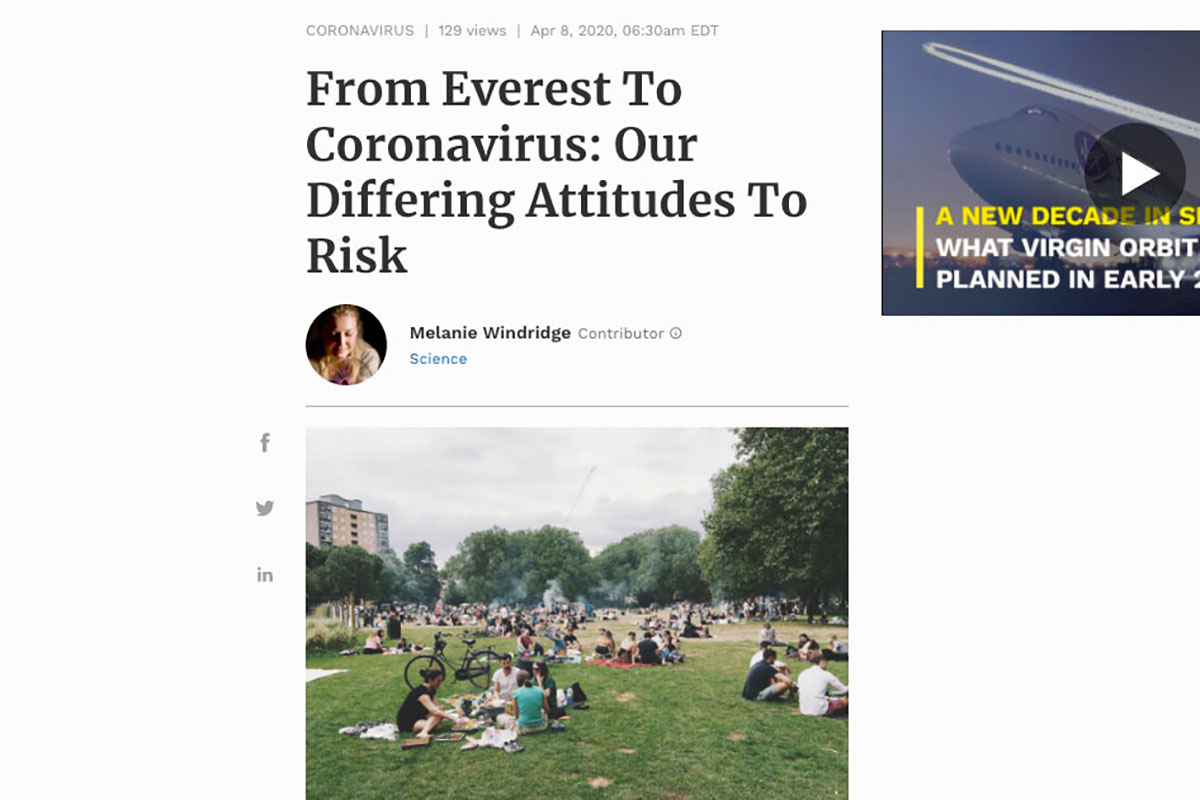The following article was published by Forbes on 8 April. The author Dr Melanie Windridge, is VP of the Alpine Club, a UIAA member association.
The coronavirus pandemic has seen a global change in human behaviour on a scale and nature unseen in recent times, perhaps ever. In the space of a few weeks the majority of the world has radically changed how they work, socialise, and think.
Yet many look on aghast that not everyone has reacted in the same way as them. People limiting themselves to leaving the house for daily exercise are shocked that others have gone to the park for relaxation. Still others are shocked anyone even leaves the house.
Whatever the right thing is to do (and I urge sticking to official advice), we should not be surprised that people do not all have the same attitude to risk. After all, some of us worry about looking out of a high window, whilst others are happy to leap between buildings.
In 2016 I climbed Everest, which many consider risky. Certainly, it is more risky than staying at home. About 50 people in the UK die suddenly every day – a one in a million occurrence (0.0001%). So just living is extremely low risk, but not risk free. The risk of death above base camp is about 1.5% – 15,000 times the risk of daily life.
But of course, everyone is an individual and everyone who climbs Everest assumes – quite rationally from a statistical perspective – that they won’t be in that 1.5%. My assumption was, it would seem, vindicated. But not everyone’s is.
To read the full article please click here.



